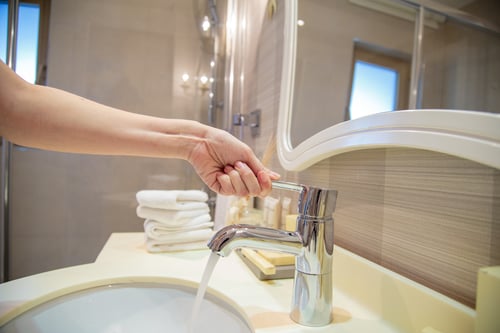Cold Water System Design
Cold Water Supply
Water Infrastructure & Building Codes
Every building needs an adequate supply of potable water for drinking and for personal hygiene, as well as general activities that include cleaning, cooking, and, in industrial settings, various manufacturing processes.
Every city has its own infrastructure and regulations that govern the supply of water to building owners. For instance, in New York, the New York City (NYC) Department of Environmental Protection (DEP) is responsible for water management and operates and maintains the city’s water system. In Chicago, water management is the responsibility of the city’s Department of Water Management.
In addition to the American National Standard, the Uniform Plumbing Code (UPC) that provides minimum standards and requirements for plumbing, all cities have their own building and plumbing codes. These dictate standards and minimum specifications that relate to every element of the building process including cold water system design and construction.
The plumbing engineering design team at New York Engineers understands all the ramifications of the complex water infrastructures we deal with. We also have deep knowledge and many years of experience of the various plumbing codes and how they relate to different buildings and dwelling units in terms of cold water supply. These include the NYC Plumbing Code that we work with on a daily basis.
Additionally, we have a thorough insight into standards and guidelines published by the American Water Works Association (AWWA), the American Society of Civil engineers (ASCE), and the Ten State Standards: the Recommended Standards for Water Works.
Water systems, including cold water systems, must be designed by professional engineers who are licensed in the state they operate in. Complex projects require the involvement of structural, mechanical, engineering, and plumbing specialists, which is one of the reasons our experienced MEP engineers can guarantee fast turnaround times.
Water Supplied to Buildings

Water quality is a vital consideration for any MEP engineer designing a cold water system. The NYC Plumbing Code requires that all the city’s water comes from a reliable source of potable water, preferably an existing public water main that is maintained by the city. More specifically, the code states that all potable water must be “free from impurities present in amounts sufficient to cause disease or harmful physiological effects and conforming to the bacteriological and chemical quality requirements of the New York State Sanitary Code.”
Occasionally, potable public water supplies are not available and we are forced to find other sources. But we cannot do this without approval from DEP, the Commissioner of Buildings of the City of New York, and the Department of Health and Mental Hygiene. The requirements for these sources of water are very strict and the usual flow rates and pressure requirements apply. Before the water can be linked to the cold water system, the local authority must approve it to ensure the quality is up to standard.
Clearly, consideration of health is paramount, and only potable water may be supplied to taps and other plumbing fixtures that supply houses, apartments, and other buildings with water that will be used for drinking, bathing, for culinary use, or to process food, or pharmaceutical and medical products. It is the responsibility of the MEP designers, including NYE MEP engineers, to ensure that the water supply system delivers water to the plumbing fixtures at the pressures and rates specified in the Code. We take this responsibility very seriously.
It’s not just the quality of the water supplied, it is also the cold water system design and the way the system is connected, that matter. If connections aren’t done correctly, there is a danger that even well-designed potable water systems could be contaminated by cross-connection that allows contaminants to reverse flow (or backflow) from sanitary fixtures back into the pipes that carry potable water. The NYC Plumbing Code requires that water service pipes and building sewers are separated by at least 5 feet (1,524 mm) of earth that has not been disturbed. Since this often isn’t possible, the alternative is to compact the earth thoroughly.
Our NYE professionals design cold water systems holistically to ensure that correcting one water quality problem doesn’t lead to a different problem or amplify an existing one. For instance:
